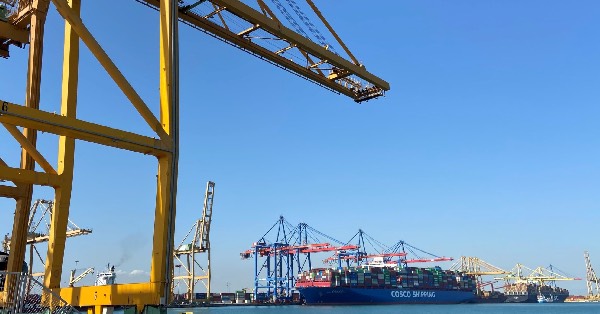Ranked 20th in the world and fourth in Europe according to the data for the second quarter of 2022 of the connectivity index prepared by the United Nations Conference on Trade and Development (UNCTAD)
The Port of Valencia has consolidated its position as the best connected port in the Mediterranean according to the Port liner shipping connectivity index (LSCI) prepared by the United Nations Conference on Trade and Development (UNCTAD) and is in 20th position worldwide in the second quarter of the year in terms of connectivity. A position that reinforces Valenciaport as a benchmark for improving the competitiveness and opportunities of Spanish import/export companies. Maritime connectivity fosters new advantages for the ports and their hinterland by favouring greater participation in international trade and better access to markets, which reduces the transport costs of goods.
Moreover, the Port of Valencia continues to occupy first place in this ranking among Spanish ports, and fourth place in Europe after Rotterdam, Antwerp and Hamburg. According to the UNCTAD index, the Asian ports lead the ranking of connectivity with Shanghai at the head of the world classification followed by the ports of Ningbo, Singapore, Pusan, Qingdao and Hong Kong. Rotterdam is in seventh position, Antwerp in ninth and Hamburg in fifteenth place. After Valencia, as the fourth European port and twentieth in the world, among the Spanish ports, Algeciras is in 22nd position, while Barcelona is in 25th place.
Connections with 1,000 ports
In the case of Valenciaport, the precinct maintains connections with almost 1,000 ports in 168 different countries (87% of the countries in the world). In fact, from the Valencian docks, which operate with a hundred regular lines managed by 35 different shipping companies, goods have been sent or arrived from China or the United States, but the capillarity of the Port of Valencia also allows goods to be sent to remote islands such as Papua New Guinea, Vanuatu, Wallis and Futuna, the Virgin Islands or Guam, among others.

Valenciaport acts as a facilitator of commercial exchange in its area of influence, which represents 55% of Spain’s GDP, and its commitment to strengthening connectivity by adapting its infrastructures and services to the needs of the market with the aim of attracting the largest number of shipping companies and shipping lines. In fact, 41% of the export/import traffic of the Spanish port system passes through the Valencian docks, which this year has also consolidated its position as the fourth European port in container movement.
The Liner Shiping Connectivity Index uses different variables to calculate the connectivity of the ports such as:
– The number of shipping lines operating container traffics in the ports.
– The number of scheduled services offered in those ports
– The number of vessels they employ on services to and from the ports of each country
– The average TEU capacity offered by the vessels operating in those ports
– the maximum size of vessels operating in the ports
– The number of other ports that are connected to the port by direct liner shipping services









































